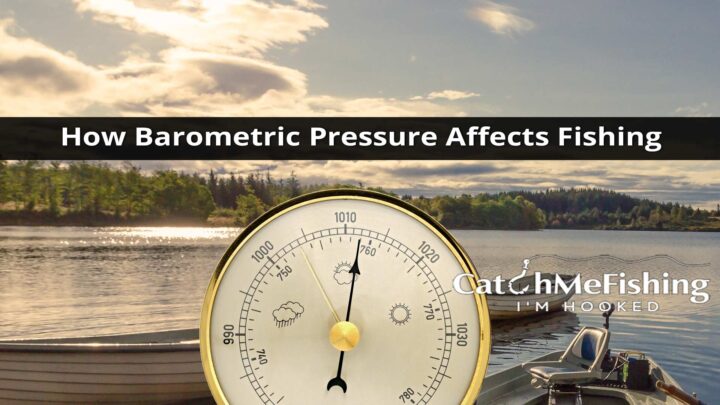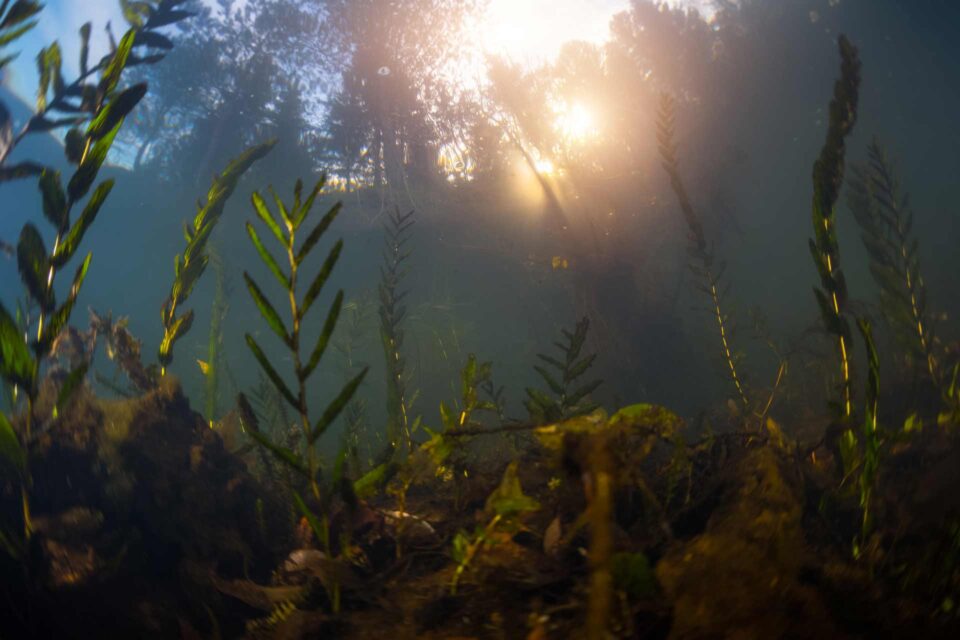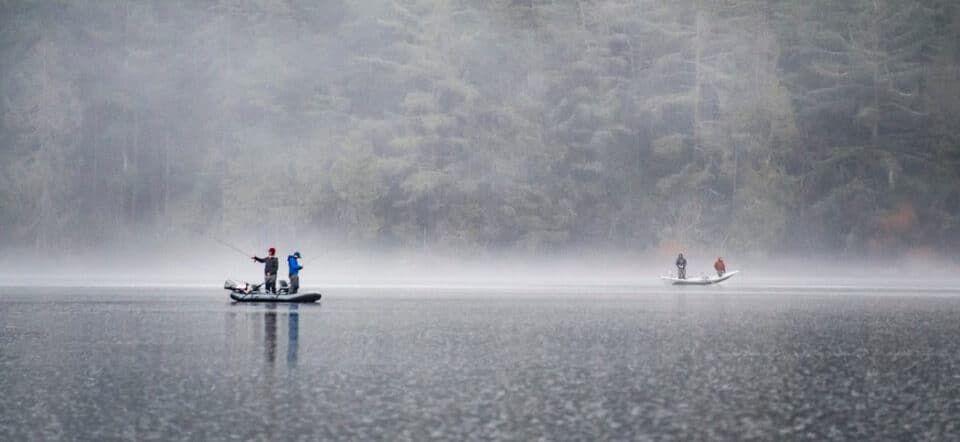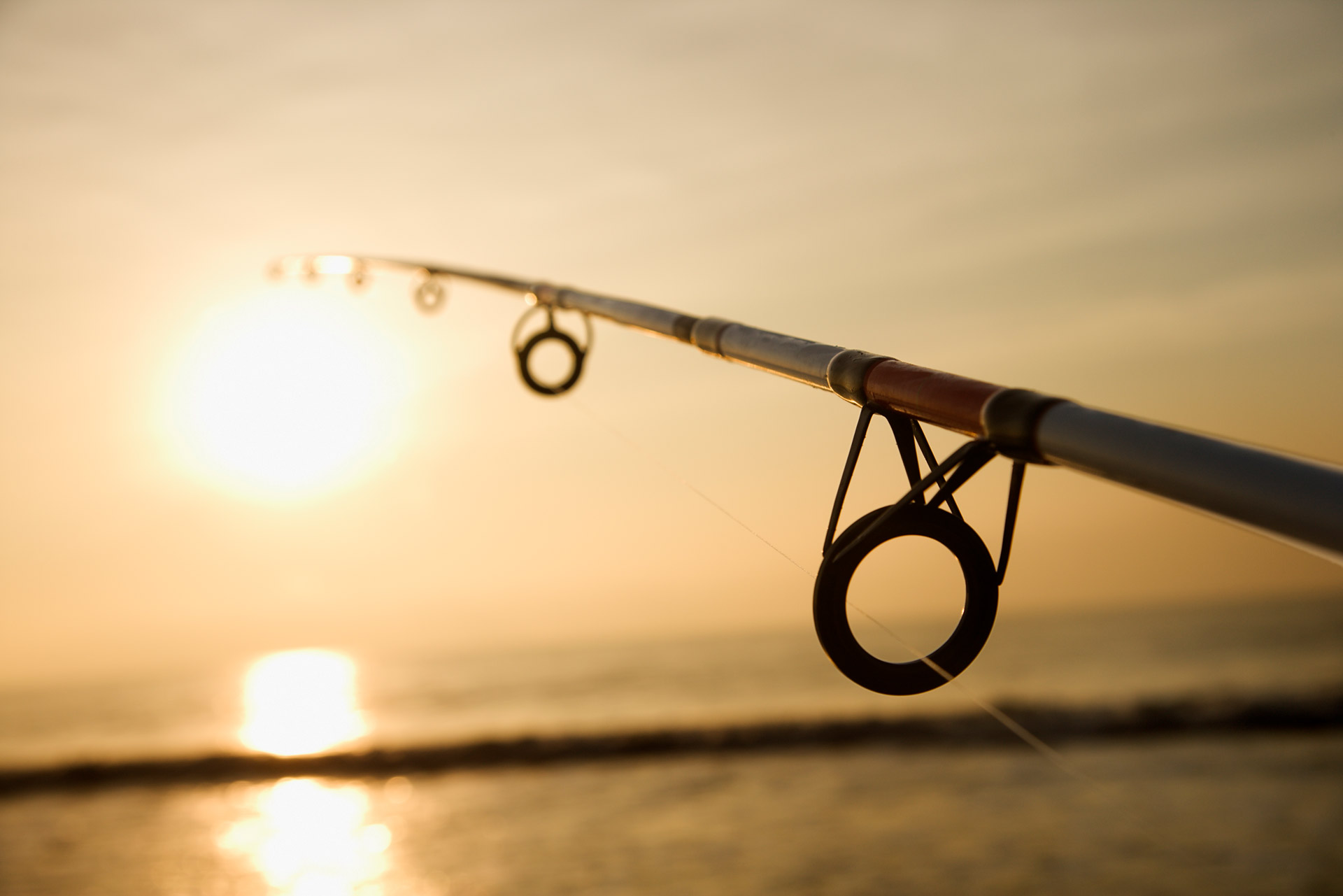How Barometric Pressure Affects Bass Fishing: best pressure to fish

What is Barometric Pressure?
Barometric pressure is the measurement of air pressure in the atmosphere (atmospheric pressure). To look at it more simply, it’s the weight of the air that’s pressing on everything on earth. In this article I'll show you the affects that barometric pressure and bass fishing have, and why you should watch for changes in the air pressure before you go fishing.
The average air pressure on sea level is about 14.7 pounds per square inch / 6.7 kg per square cm. It’s always changing and is different in every area.
The traditional tool for measuring the barometric pressure is a barometer, but nowadays, smartphones and smartwatches do this job in a matter of seconds.
Barometer Readings
I use this barometer to measure the air pressure. There are two ways of measuring pressure. The first one is with the help of an aneroid through the expansion of the metal. The other method is by the help of mercury, as its height adjusts to the appropriate level in the tube.
You can use any method of measuring the air pressure when going fishing. But let’s find out if it’s relevant to fishing in the first place and what role it plays in developing a good strategy for catching fish, especially bass.
How Does Barometric Pressure Affect Bass Fishing?
Air pressure affects not only things on the surface but also every object and live creature deep in the water. But how do fish feel the pressure?
Fish are very susceptible creatures, the lateral line system allows them to sense barometric pressure, water motions, movements, and vibrations. Most fish are affected by atmospheric pressure and bass is one of them. A sudden change in pressure has a significant influence on their living and feeding environment.
Air Pressure Effects Water Clarity
Barometric pressure changes cause small particles of different materials to rise unusually high or go deeper than usual. The visibility and water clarity change due to the pressure shifts.

Barometric Pressure and Weather for Fishing
Weather and air pressure play an integral role in determining fish behavior and the two factors are tightly connected.
You should always be aware of the weather prognosis and barometric pressure before going fishing, in order to develop the most effective bass fishing strategy. You also need to prepare appropriate fishing gear and choose the technique you’ll be following for different locations and water depths.
Effects at different Depths
Fish that spend most of their time in shallow waters are relatively more sensitive to the changes in atmospheric pressure than fish in the deeper waters.
The importance of air pressure in bass fishing isn’t examined scientifically and we don’t have any formal evidence and explanation, but the years of experience and general knowledge of physics prove the relationship between barometric pressure and bass feeding patterns and behavior.
When the air pressure changes, fish go up and down the water in different depths. Some fish like black bass have a closed gas bladder that helps them balance. When the barometric pressure pulls or pushes fish up or down, making them sink or float unwillingly, the closed gas bladder lets them hold a steady position. They use the bladder to archive neutral density not to let the barometric pressure change their swimming levels. This process requires energy and makes fish lazy, tired, and much more inactive.
Even slight changes in barometric pressure change the feeding patterns and behavior of bass. That’s why you need to pay close attention to the pressure and weather.
The Best Barometric Pressure for Bass Fishing
We already know that barometric pressure has an impact on bass activity and behavior but now following questions arise: Do fish bite better with high or low barometric pressure? And how should we plan our fishing strategies depending on the air pressure?
Is high or low pressure good for bass fishing?
Generally, it’s easier to fish when the air pressure is relatively lower, but it doesn’t mean you should only go bass fishing when the barometric pressure is low. You just need to know different techniques and have the appropriate gear.
Why is it better to go bass fishing when the atmospheric pressure is low?
When the pressure is low, bass feel lighter and move around easily, creating more opportunities for you to catch them. Bass are much more active and move around a lot searching for food.
We may not feel the difference between low and high air pressure, but bass feel irritated and uncomfortable in high barometric pressure.
It happens because there is a noticeably troubling body pressure on their swimming bladder. It makes them less willing to move around a lot for food or just roam in the water, making it harder for you to find them.
Barometric Pressure Effects on Fish Size
Big bass usually go deep in the water when the barometric pressure drops to gain the necessary gas pressure for creating the perfect balance. But the sudden change in pressure makes them inactive and bass become slower.
Larger bass are relatively less susceptible to change in barometric pressure. They are slowed down but feel less uncomfortable and under pressure than smaller bass. If you’ve ever dived deep into the water, you’ll know the feeling of high pressure pushing you heavily straight in your head and makes your ears pop.
So, fast changes in barometric pressure affect bass negatively, but slow and gradual changes are not a problem. It’s a great time to go out there and catch a plethora of bass.
One of the best periods for bass fishing is just before stormy weather. The temperature and barometric pressure are changing slowly, allowing you to use the best opportunity and catch bass.
In general, bass tend to eat more before a storm and cold front, so they’ll be out there hunting for food. You’ll have a chance to locate them easily and much more quickly.
Best Barometric Pressure for Bass
The best barometric pressure is different for every fish. For bass, the ideal air pressure is about 29.7 - 30.4 inches of Mercury. It doesn’t mean you should only go bass fishing when you have normal pressure and is possibly in the perfect condition for bass, it just means it’s the easiest time to find bass quickly.
30 Inches is the normal pressure, thus you can navigate your way around it. Anything more than that is considered to be high barometric pressure, creating discomfort for bass. Accordingly, less than 30 is low air pressure, bass feel light and swim around actively constantly looking for food as they are opportunistic and very lively creatures.
Best Fishing Equipment
Fishing can be difficult without the right set of hooks and lures. The barometric pressure plays a major role in this decision as it impacts both fish behavior, but also which types of bait you will need on any given day.
In case of a sudden change in barometric pressure, you should switch up your techniques and use more active and easily noticeable baits not to make the bass work for the prey too much. Use heavyweights, try out different rigs.
Carolina rig is the best choice for deep water fishing especially when the bass are slow, as this rig covers a huge area in a relatively shorter time, and you’ll be able to catch bass that are swimming inactively. Also, use bright-colored lures to make it look extra attractive and intriguing for bass. Another favorite of mine is a Texas rig, It's a great all rounder.
The Effects of Humidity on Bass Fishing

Humidity doesn’t play a big role in bass behavior and their fishing patterns, but it still is very useful to pay attention to it. Humidity doesn’t affect the bass themself, but it tells you the level of barometric pressure.
When it’s highly humid, the air pressure is most certainly low and it’s easier to find bass, as they are more likely to swim around energetically searching for food. But when the humidity is extremely high and it’s heavily raining, fish will still be under high pressure and won’t be willing to move too much.
When the humidity is low, the air pressure is relatively higher, fish feel bloated and uncomfortable. Therefore, you need a different approach to catch inactive fish.
It’s not scientifically proven that humidity has anything to do with bass activity, but years and years of experience has shown us that if you’re going after big bass, it’s more practical and strategic to choose a time period when the humidity is high and barometric pressure is relatively low.
When bass are active not only you’re searching for them, but also, they are looking for the prey (your bait, in this case).
Other than low air pressure, pay close attention to the weather. The days just before a storm and storm front is the perfect time to go bass fishing.
Ready to Go Bass Fishing?
Now that you know that barometric pressure has an integral part in the bass eating behavior and activity, you know how to plan your bass fishing experience. Choose the appropriate gear, techniques, and lure types that will help you in relevant water depths, locations, and bass hotspots.
Bass are very sensitive to atmospheric pressure changes, especially the ones in shallow water. When the barometric pressure is high, fish feel a heavyweight pressing on their swimming bladder and are less energetic, much more tired, and lazy. That’s why it’s harder to find fish, but it’s not impossible or extraordinarily harder than usual.
The best time to go bass fishing, depending on the air pressure and weather conditions, is when it has been sunny and warm for a few days and a storm is on its way. The barometric pressure is low and is gradually changing in this period of time, so bass will be energetically swimming around, searching for food to be full and ready for the coming storm.
This does not mean that you should only fish when the air pressure is relatively low, you just need to adjust your gear and fishing techniques to the pressure, humidity, and weather. All these factors are tightly connected, all three have an impact on bass behavior. We can’t break down the factors into pieces, which is why science struggles with examining and proving the connection between air pressure and the success of bass fishing.
There are many gadgets that you can use to measure barometric pressure. Some fishers prefer measuring it by traditional barometers, but you can also use your phone or even a smartwatch.
Whether you’re a beginner or a professional bass fisher, paying attention to the air pressure, weather and humidity will help you better plan your fishing trip.
Keep an eye on the barometer and aim accordingly.
Happy fishing 🙂



